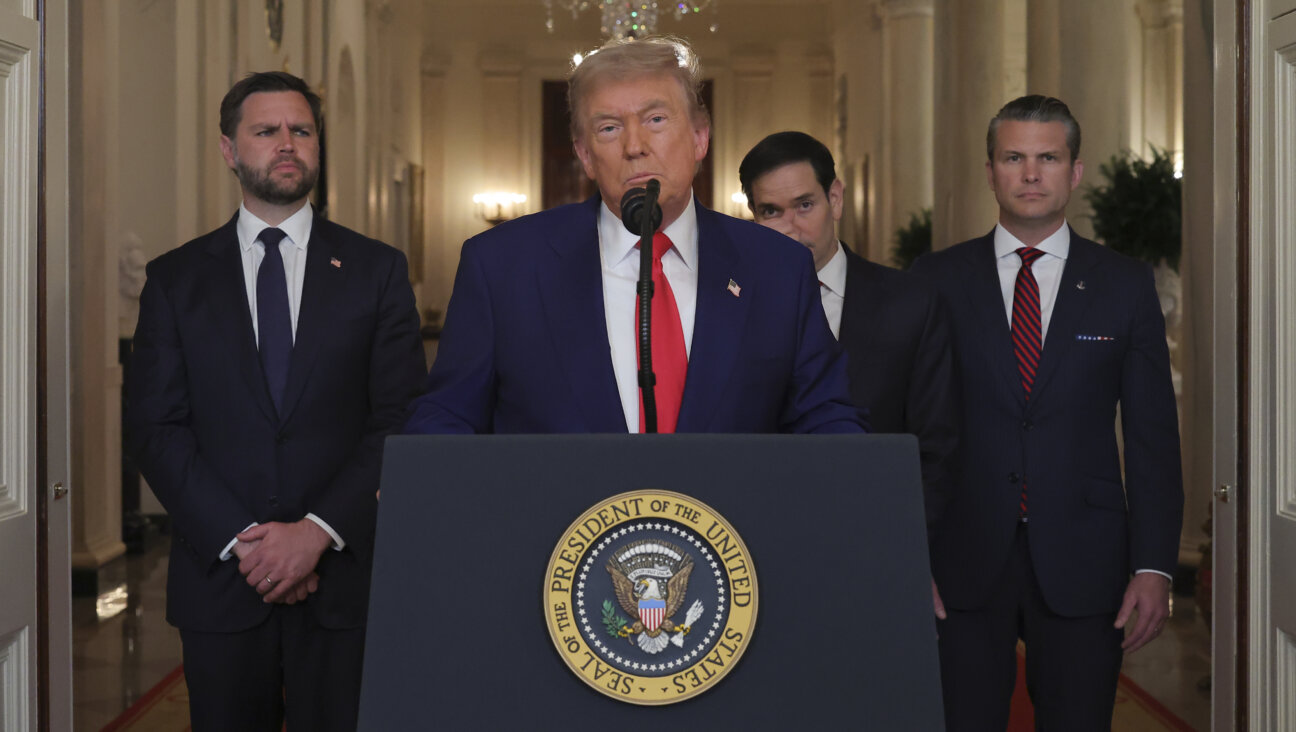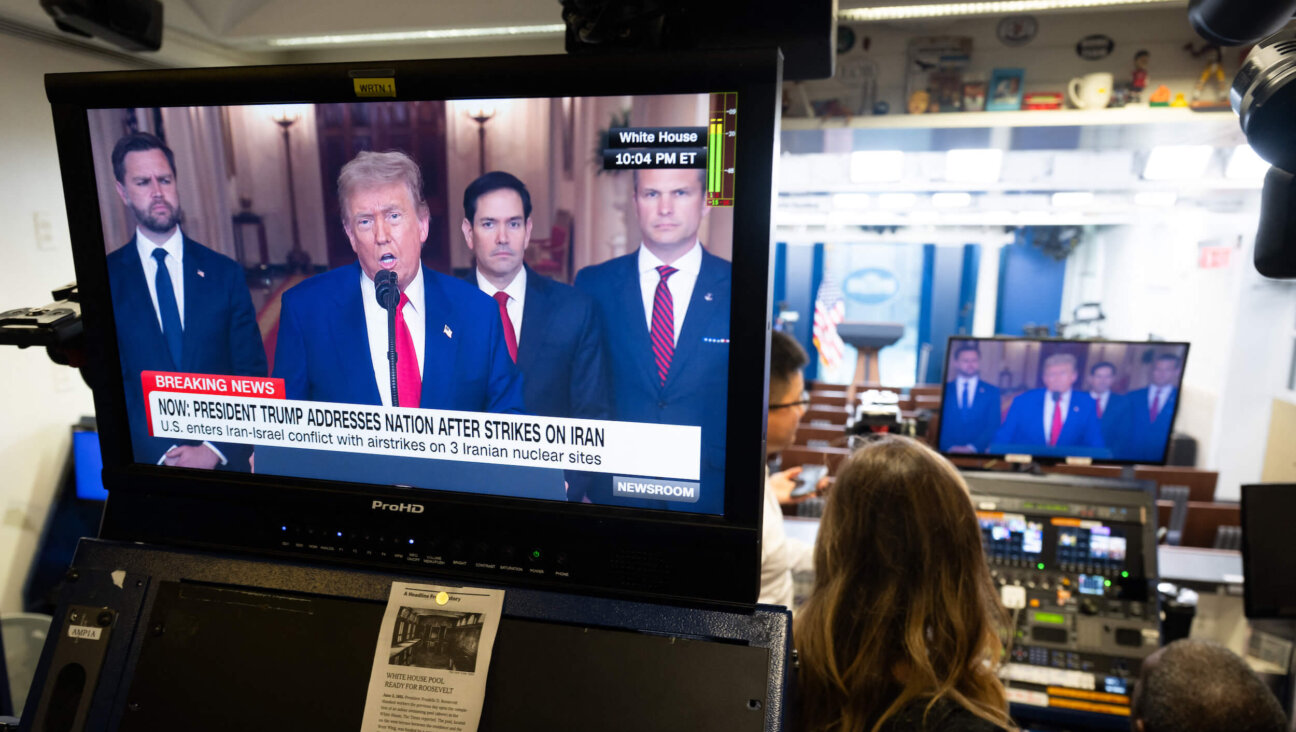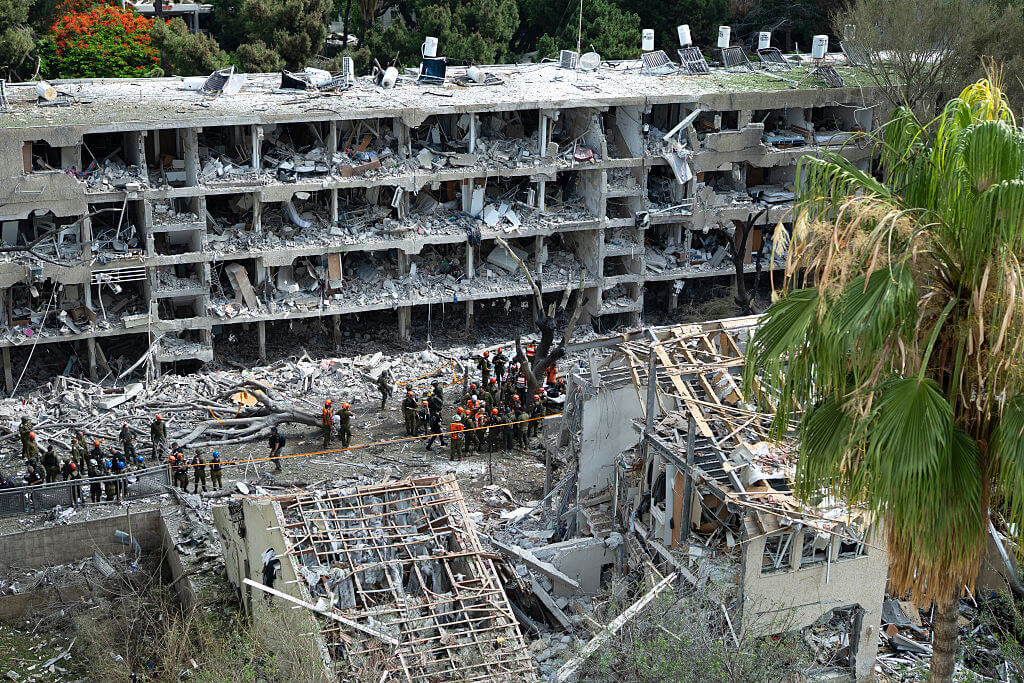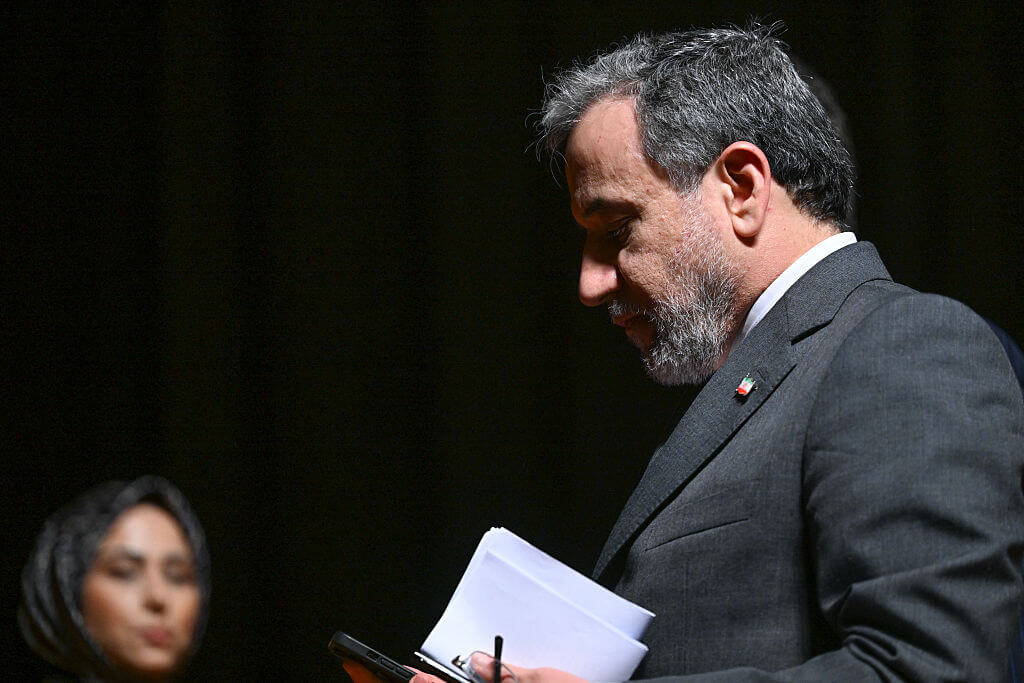How Naomi Shemer’s ‘Jerusalem of Gold’ Actually Hurts Israel

Graphic by Angelie Zaslavsky
The songs we sing to ourselves play an outsized role in shaping how we see our culture. So it is distinctly uncomfortable to consider the possibility that a beloved anthem either explicitly or implicitly promotes a toxic idea. Naomi Shemer’s “Jerusalem of Gold” is among the most beloved modern Hebrew songs. No other song so effectively celebrates the triumphant resolution of Jewish historical longing for Jerusalem. Yet the song also suggests, intentionally or not, a problematic wish to render Jerusalem’s Arab/Palestinian population invisible. It does not merely ignore these people as a matter of emphasis or choice of focus, but actively sings them into non-existence.
Just as it’s done for millions who treasure this song with its elegant play on traditional imagery and lilting melody, “Jerusalem of Gold” has played an emotionally powerful role in the development of my identity. So I do not challenge it lightly. Nor is my challenge rendered in service of a narrow ideological commitment. Jerusalem and its history are central to my identity. This is where I have chosen to raise my children, despite its challenges, and in many senses because of them. I choose to live in this place because I am moved by its past, invested in its present, and inspired by the vision of its future. My relationship with Jerusalem is perhaps the most enduring love of my life. And it is from this place that I question Shemer’s anthem.
A work of art must be considered in multiple contexts: its production, its circulation, and its reception by different audiences. The historical pathos of this song is intimately bound up with the story of its composition in the spring of 1967. At the time, Jerusalem was divided between Israeli and Jordanian control, bisected by a no-man’s land of thorns, ruins, and barbed wire, this boundary enforced by lethal Jordanian sniper fire. Noting a lack of contemporary songs celebrating the city, Mayor Teddy Kollek invited several songwriters to remedy the situation. Only Shemer met the challenge, drawing on a range of traditional sources to produce the song’s first and third stanzas and chorus.
The song’s title and its chorus reference a Talmudic tale about a penniless Rabbi Akiva wishing he could give his bride a “Jerusalem of Gold,” while its closing line borrows from the 12th-century Rabbi Yehudah Halevi, who in several poems offers himself as a “lyre” to give voice to his people’s yearnings to be restored to the city. Shemer’s first stanza references Lamentations, the biblical encomium for ruined Jerusalem, that opens with an image of the city sitting “lonely” and emptied of its people.
Shemer played this first draft for actress Rivka Michaeli, who pointed out that it only alluded to the Old City with mention of “a wall” in the city’s heart. Michaeli’s father had been born in the Old City’s Jewish Quarter and, like so many, he yearned to cross the no-man’s land and return. In response, Shemer composed what is now the second stanza, painting the Old City as a ghost town:
How dried up are the water cisterns; the market square so empty.
And none visit The Temple Mount in the Old City.
And in the caves in the stone, spirits wail.
And none go down to the Dead Sea by the Jericho Road.
In Hebrew, this verse opens with the same word that opens Lamentations, and must be read in the context of 19 years of enforced prohibition of Jewish access. In 1948, the Jordanian Legion had expelled Jews from the city’s eastern neighborhoods and the Jewish Quarter and destroyed dozens of synagogues and desecrated ancient Jewish graveyards. Ever since, the Old City had remained absolutely empty…of Jews. But the city itself was not abandoned. Its markets and the Temple Mount continued to be inhabited and the Jericho Road connected Jerusalem to Jordan.
You might read Shemer’s images as illustrating an absence of Jews, not of people altogether. But the cisterns and market-square are not particular religious or national fora — they are general centers of daily lived life. Far from participating in traditions associating Jerusalem with a redemptive dream of future peace, this song promotes an imagined erasure of the city’s Arab citizenry.
If the second stanza nonetheless makes sense in the context of Jewish expulsion and prohibited access, three weeks later that context was radically transformed. Israeli troops captured the Old City and eastern neighborhoods and the song took on an aura of prophecy. Shemer responded by composing a final stanza that functions as a confirmation:
We have returned to the water cisterns, to the market and to the square.
A shofar calls from the Temple Mount in the Old City.
And in the caves in the stone, thousands of suns are shining.
We shall return and go down to the Dead Sea by the Jericho Road.
While Jews often cast this event as the city’s “reunification,” Shemer’s anthem certainly does not celebrate a reunification of two halves of its citizenry. It trumpets repossession of the eastern half of the city by its putative rightful owners. The material foundations of the Old City themselves respond by rejoicing, its restive ghosts now replaced by thousands of suns. If the stark emptiness of stanza two makes sense as a song of exiles, both stanzas two and four ring differently in the context of their return. It now suggests an empowered majority’s rendering of an inconvenient minority invisible.
At a time when Jewish historical experience and cultural memory are increasingly derided as Zionist propaganda, insisting on their integrity need not serve narrow partisan agendas. And not all celebrations of cultural narratives need be cast as chauvinistic disavowals of others. But in the context of political power and sovereignty, it’s important to consider how such celebrations are inescapably political.
Since 1967, well-documented policies have often explicitly privileged Jerusalem’s Jewish citizenry over the Palestinian Arab minority. This minority’s refusal of normalization and abstention from participating in municipal government bear some responsibility for such policies. Objections and protests simply do not pack the same immediate political punch as enfranchised opposition does. But if it’s in the interests of both of the city’s major populations to encourage productive political participation, as I believe it is, Shemer’s erasures do not serve that goal. Nor does this song serve to bolster Israeli commitments to democracy, in our own eyes or in the eyes of our critics abroad.
We can celebrate the Jewish historical connection to Jerusalem without presenting the Old City’s public spaces as devoid of humanity altogether in the absence of Jews. Granted, not every work of art needs to represent the full political complexity of every situation. In fact, this isn’t the job of any song. If it were, all would be doomed to fail. But “Jerusalem of Gold” actively effaces complexity, which is quite a different thing altogether.
Between 1948 and 1967, the Old City was inhabited by a people who mourned our victory in 1967 and refuse to embrace our sovereignty to this day. Regardless of how you view those 19 years and their resolution, treating an entire population that seeks national self-rule as if it doesn’t exist is counter-productive and self-deluding at best.
















